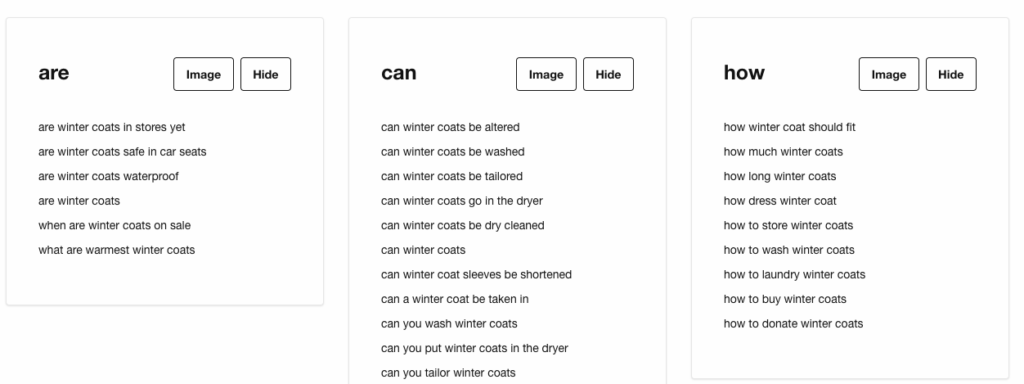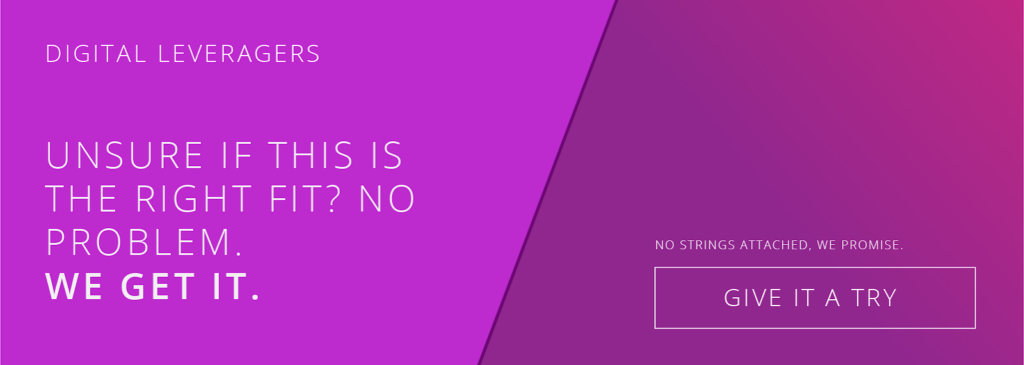You might be wondering: how do I create a blog posts that interests my audience?
Maybe you’re even contemplating what sort of digital marketing tactics to use within your blog posts, so that your content is optimized for search engine optimization.
Blogs are a powerful way to drive traffic to your website, and if you do it correctly, blogs can even help you convert prospective customers. We’re going to share five expert tips with you so that you can nail your next blog post.
Make your blog title a highly searched question or phrase
Imagine writing amazing content, and having no one being able to find it. Unfortunately, that’s a reality for many business owners if they are not tailoring their blog content for search engine optimization, or if they are not digging into the data to see what their audience truly wants to read.
One way to ensure that your blog post can be found is by using a highly searched question or phrase as your title. Free tools such as Answer the Public and Google Trends can help you with this.
For example, let’s say that you’re a fashion boutique owner looking to write a blog post for the winter. Simply take a term like “winter coats” into Answer the Public, and you’ll be given a variety of search terms that people are actually typing into Google:

Photo Credit: Answer The Public
After carefully inspecting the results, you’re now able to put your creativity to the test. Think about these topics in terms of what makes the most sense for your business to be writing about. Some candidates might be:
- 5 of the Warmest Winter Coats in 2019
- 5 Tips for How to Buy Your Next Winter Coat
- Can You Wash Winter Coats?
- How Your Winter Coat Should Fit
Insert your focus keyword or phrase in various places
A focus keyword or phrase is the main word or sentence that you want your blog to be searchable for. It’s important to think about this before writing your blog post so that you can ensure that your plugging the word/sentence throughout your writing.
Remember that you still want to make sure your blog post makes sense. Don’t stuff this word or sentence in places that sound unnatural. Google will also be quick to penalize your for “keyword stuffing” if you do so.
If we keep with the example we used above, your keyword might be “winter coats” or as a phrase “wash winter coats.” Think about ways you can naturally use this throughout your post.
Some key places to insert the keyword or phrase would be:
- In your title
- In your slug
- In your headers
- In your first paragraph
Use both internal and external links
A blog post is an opportunity to provide a ton of value to your readers, and it also gives you the chance to lead them to different, relevant places on your website.
Using both internal and external links will boost your search engine optimization and overall ranking. This means including links in your post that link to other places on your website, and links that lead to other websites that might talk about a similar topic, or provide further information.
If you’re writing about the top five warmest winter coats, this is a chance for you to link to your ecommerce store so that readers can buy them if they wish. Additionally, you might link an online magazine article that explains why one of the coats you listed in your blog is so warm.
Make sure you are always externally linking content that you are referencing in your blog post as well.
Break up your paragraphs for readability
No one likes seeing endless blocks of text, let alone actually reading it. Think about user experience each and every time you write a blog post. Breaking up the text is a great way to guide a reader more effortlessly through all of the information.
Here are some ways to do just that:
- Inset high-quality photos, graphs and infographics where applicable
- Use bullet points for lists (like this one!)
- Use subheadings (H2, H3, H4, etc.)
- Shorten your paragraphs
Implement a lead magnet offer
Now that your prospective customers have found your blog post and read it, you need to think about the next step.
Implementing some sort of lead magnet offer within your blog post allows you to start building your email list. Essentially, this works by gating content that a user will receive in exchange for their email address. Some tried and true examples are:
- Price guides
- E-books
- White papers
- Free samples
- Video content
You can also encourage users to sign up for your e-newsletter, rather than a lead magnet, if your business goal is to build out that list so you can send monthly promotions and information. It’s important to make sure that the lead magnet or e-newsletter list is relevant to what you are talking about in your blog post.
For example, at the end of your winter coats blog, you might encourage users to subscribe to your monthly e-newsletter so that they can be alerted of winter sales and discount codes.
Confused about how to create your own lead magnet? That’s what we’re here for!


